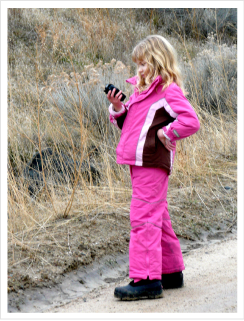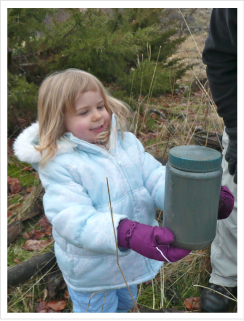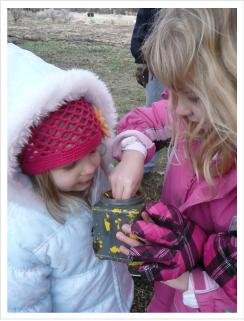Kids love to hunt for treasures, and geocaching is a great activity to engage the passion while learning valuable way-finding and wilderness medicine skills. Besides having fun, they get outside, assume leadership roles and explore their community. With over two million geocaches worldwide, you are bound to find a few in your locality. Best of all, it's practically free if you use a free online geocaching membership and your smartphone.
What is Geocaching?
Think of geocaching as one big treasure hunt. Mapped and hidden all over the world are containers called caches. Caches are camouflaged containers, hidden in specific locations but out of sight. They often hold inexpensive items for trade such as charms, stickers and shells, along with a logbook. Adventurers navigate to a detailed set of GPS coordinates to find the cache. Once found, kids can log-in and exchange a trinket for something in the cache. The caches, descriptions and coordinates are found on websites such as Geocaching or Opencaching where you can also post your stories and pictures.

Cache locations vary from urban parks to the end of long trails. Some are even under water. There are also websites available for caching worldwide, so be sure to research caching by country destination. The websites highlight recommended newbie and family hunts. Check out the description and location to find one suitable for your child's ability and interests. We chose a short half-mile trail our first time out, but it took two trips and over an hour of searching to discover a small shot-gun shell cache. This was a micro cache with just a log sheet. The adults had a sense of accomplishment but the kids were clearly disappointed in the lack of "treasures."
Ready, Set, Cache!
Start by visiting one of the above geocache websites. Basic membership is free, and you'll have access to all the information you'll need to get started, including the free app for a smartphone. Involve the whole family while researching; it's a great time to answer questions and read about other participant's adventures.
There are multiple ways to navigate to a cache: use your smartphone with apps, a GPS, or a map and compass. Geocaching.com offers a free app called "Geocaching Intro" by Groundspeak Inc. It's available for iPhone, Android and Windows Phone 7. Opencaching.us offers a free app called "Geocaching Buddy" by BtStSoft for iPhones and Androids. Similar apps are available for different smartphone brands. To access these free features you'll need to sign up first. The success of your smartphone will depend on its GPS device and is subject to GPS limitations in the field.
Another method is to get a GPS app for your smartphone such as MotionX. It will drain your battery quickly, so bring a back-up battery for longer forays. It behaves similar to a stand-alone GPS unit: just enter the latitude and longitude as waypoints and navigate to the site. This particular app has limits to the number of waypoints you can enter.
You can also use a standard GPS device. Plug in the coordinates according to the type of device you own. Directions to assist you with downloading coordinates can be found on the websites.
Finally, there are always maps and compasses to make for more skill-building adventures.

Checkout Tread Lightly
for more tips on safe and responsible geocaching

Older kids can learn how to put in GPS coordinates and use smart phone geocaching apps to navigate in the field.

Finding the cache is the equivalent of a well-earned snack and rest during a hike.

Geocaching builds teamwork as well as navigation skills.
On the Trail: Cache In!
Involve older kids in the technical and way-finding skills by teaching them to use the way-finding device of your choice. Younger kids can observe, and be responsible for carrying the trading of treasures and snacks. My oldest granddaughter mans the GPS device and likes to lead the team. She perceptively steps aside to let the younger ones find the actual cache. This teaches leadership and team dynamics.
Caching also provides an opportunity to talk about wilderness safety issues such as respect for local wildlife, staying found, sun and insect safety, and treatment of minor injuries such as scratches and bruises. We use a "what if" scenario to teach these wilderness medicine skills: "What if you forgot to put on sunscreen?" Let each child figure out a solution to the "what if" problem.
Before going out, have a team plan. We use the buddy system where everyone needs to stick with his or her buddy even if we fan out to search. Additional activities can include: carrying a bag to pick up trail trash and disposing of it properly, reading logbook comments, using a relief map to recognize the terrain, and estimating time by the sun's position. Plan the usual breaks for rest, hydration and snacks that you would for any hike or day trip.
In the northern hemisphere, warm weather is upon us. So "cache" in on the fun and use geocaching as a channel to introduce your kids to the outdoors and wilderness medicine.